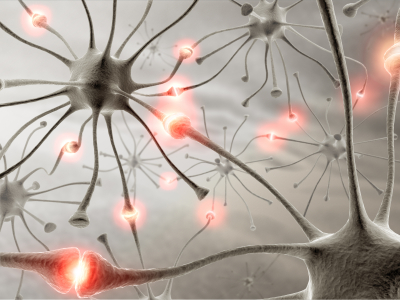
The mammalian brain is extremely complex. We know that it processes and stores information through synaptic connections within a complicated neural network. But how exactly do neurons communicate with each other? And how did this neural network come to exist? A recent paper published in Cell may provide some answers. It describes a previously unknown signaling pathway–with surprising origins–that transports RNA between neurons.
The critical protein involved in this pathway is called Arc, a known master regulator of synaptic plasticity and long-term memory. The authors found that the Arc gene originated from ancestors of retroviruses, called retrotransposons–“jumping genes” that insert and amplify themselves in a genome. What’s more, Arc protein contains structures found within viral Group-specific antigen (Gag) polyproteins, which are also present in HIV. In fact, Arc looks and behaves just like viral protein–and it uses a pathway strikingly similar to viral infection to transport RNA from neuron to neuron.
Here’s how it works.
Arc proteins self-assemble into oligomers, while binding and encapsulating Arc mRNA (and other nonspecific RNA), to form virus-like capsids within a neuron. These capsids containing Arc protein and RNA exit the donor neuron in extracellular vesicles. The extracellular vesicles then transport Arc protein and RNA to a recipient neuron, where Arc mRNA enter and undergo activity-dependent translation.
This paper also sheds light on how synaptic plasticity and cognition may have evolved. Retrotransposons, the ancestors of Arc, are abundant in eukaryotic genomes and they have evolved over millions of years to serve other cellular functions. Mammals borrowed the retrotransposon sequence around 350 to 400 million years ago when retrotransposon DNA entered the genome of tetrapods by chance. An accompanying paper in Cell showed that Arc protein in flies also look and behave like viral capsids, but this development occurred in a separate independent event 150 million years later. If this evolutionary event happened twice, it likely happened even more times, suggesting that this viral-like pathway is advantageous for intercellular communication between neurons in other species. It is fascinating to learn that our brains—one of the most complicated structures in nature—evolved by borrowing biological pathways from the simplest of organisms.
This study raises many more questions. Why do neurons use this method to “infect” other neurons with their own RNA? What RNA is being transported? What other cargo is transported? What controls the direction and distance of transport? How does this new pathway affect our cognitive ability? And can manipulating this pathway help those suffering from neurological diseases?
We are far from getting all the answers. One thing’s for certain: we still have much to learn about what goes on in our brains.
Reference: Pastuzyn E.D., et al. (2018) The Neuronal Gene Arc Encodes a Repurposed Retrotransposon Gag Protein that Mediates Intercellular RNA Transfer. Cell. 172(1–2):275–288
Latest posts by Johanna Lee (see all)
- Microfluidic Organoids Could Revolutionize Breast Cancer Treatment - March 25, 2025
- Bacteria From Insect Guts Could Help Degrade Plastic - January 28, 2025
- A Diabetes Drug, Metformin, Slows Aging in Male Monkeys - December 19, 2024
